Jane Austen In Bath | A Literary Tour
Whilst it has been over 200 years since the death of Jane Austen, the city of Bath has certainly not forgotten her. To visit Bath is to step into the world Jane herself lived in for a significant portion of her lifetime. The Georgian architecture, which is the same as when Jane walked the streets, make the city feel like it is frozen in time. It is this visual grandeur that makes it easy to see why Bath sparked an unrivalled inspiration for her novels.
What Is Jane Austen’s Connections To Bath?
The queen of wit and satire, the genius behind the nation’s beloved Pride and Prejudice, Persuasion, Northanger Abbey and others, lived in Bath from 1801 to 1806. Jane and her family followed the fashion of the time by moving to Bath. They went, like thousands of others, for the socialising, for finding eligible husbands (which of course Jane, as the early version of a feminist goddess, blatantly refused to partake in) and for taking the waters for the supposed health benefits.
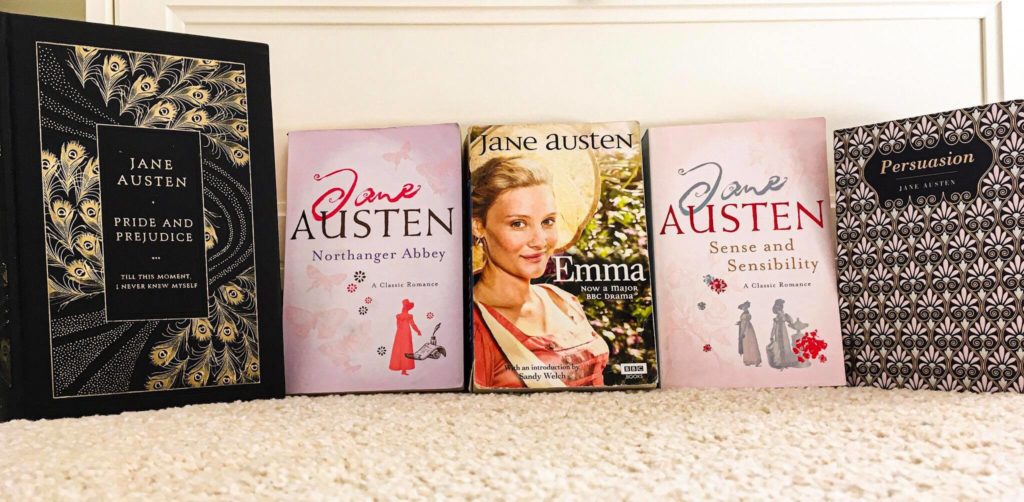
Jane Austen’s Novels & Bath
As a young lady of the country, Bath was undoubtedly an exciting city to move to. This is mirrored in Northanger Abbey‘s central character, Catherine Moreland, who is equally enamoured with the delights of city life:
‘They arrived in Bath. Catherine was all eager delight; her eyes were here, there, and everywhere, as they approached its fine and striking environs…She was come to be happy, and she felt happy already…”Oh! Who can ever be tired of Bath”‘
However, Jane’s association with Bath has become synonymous with her dislike of the city. She seemed to avoid high society, refusing to marry (as I’ve already said), striving for private life and ridiculing the upper echelons for their ridiculous customs and insincere and hypocritical behaviour. Written 10 years after Austen left Bath, the protagonist of Persuasion appears to mirror Jane’s tired and unimpressed views of the Georgian metropolis, and the novel is an amusing exposition of social interaction and manners. Anne Elliot reluctantly arrives in Bath and the high society seems to hold little appeal for her:
‘There had been three alternatives, London, Bath, or another house in the country. All Anne’s wishes had been for the latter… She disliked Bath, and did not think it agreed with her – and Bath was to be her home’
A Literary Tour of Jane Austen’s Novels In Bath
As I’ve already said, Bath is a destination that features prominently in Jane Austen’s novels. Take a look at some key places that are still standing in Bath and are a definite must-see for any Janeite fan.
1. Jane Austen Takes Refreshments At The Pump Room
Once the centre of social life, the Pump Room was were the high society in Bath met, socialised, enjoyed lavish entertainments, gathered to drink the therapeutic water, and acted as the location to see and be seen. Now, the Pump Room is a luxury restaurant where you can drink the spa ‘healing’ water from the Roman Baths or enjoy a delicious lunch or afternoon tea.
However, the splendid Georgian features of the room have remained unchanged and the relaxing atmosphere means you can experience the Pump Room in the style of an 18th-century lady.
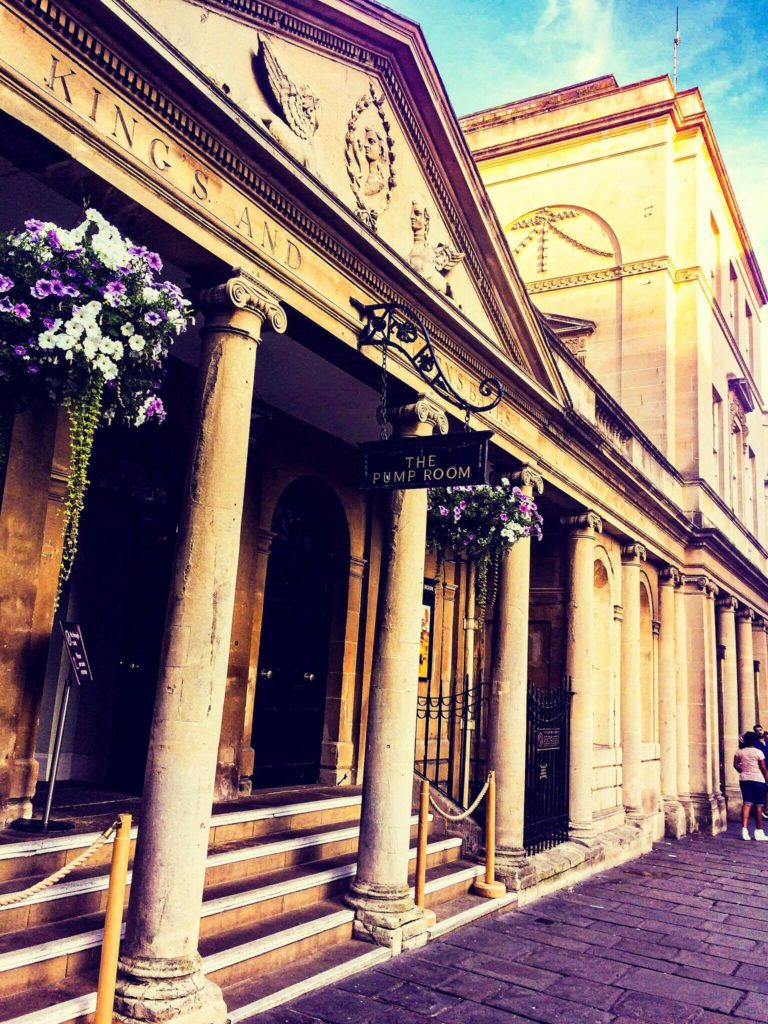
Jane Austen was familiar with the Pump Room; She even mentioned it in her novels Northanger Abbey and Persuasion. In Northanger Abbey, the Pump Room is a meeting place for fashionable people. Here the heroine Catherine Morland first meets the dashing Henry Tilney and it is where;
‘Every creature in Bath… was to be seen in the room at different periods of the fashionable hours; crowds of people were every moment passing in and out’
Likewise, in Persuasion Admiral Croft retires to Bath to take the waters and heal his gout. In the 2007 BBC adaptation of the novel, they used the Pump Room as a filming location for many of the social gatherings.
2. Jane Austen Dances At The Assembly Rooms
Another centre of social life in Austen’s era was the Assembly Rooms. These rooms provide a glimpse into the place where many people came to make new acquaintances, attend grand balls and concerts. It is also well known for being the location where young women paraded around, hoping to find eligible husbands.
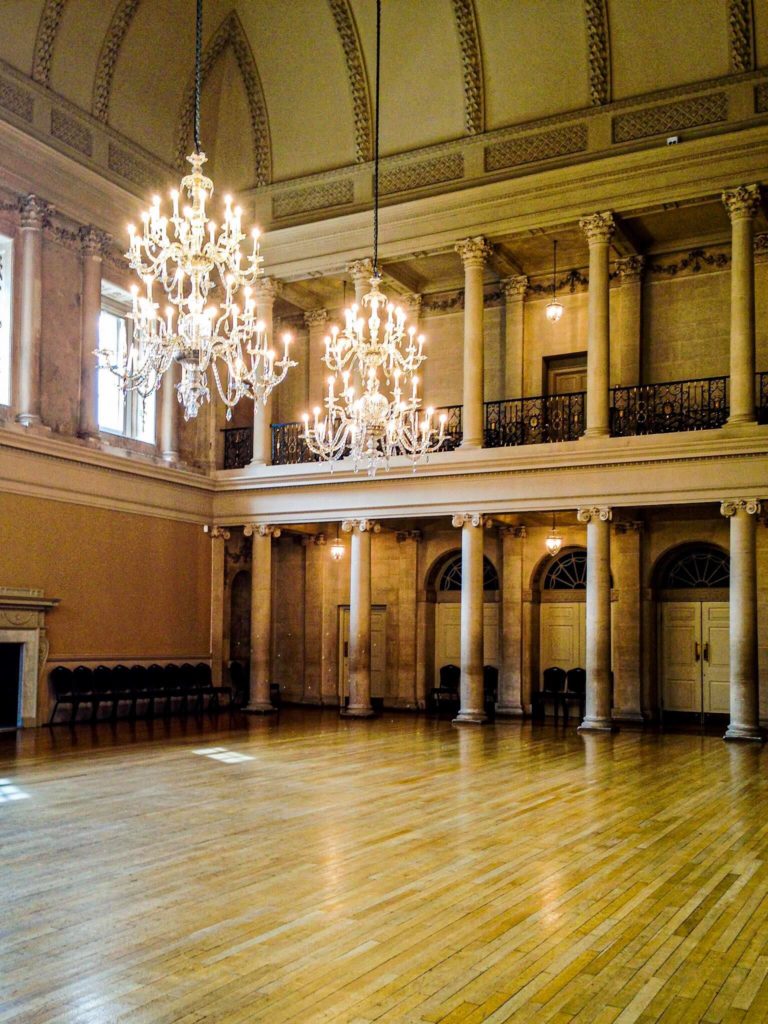
So popular were the Assembly Rooms that two were created. The Lower rooms were located in the centre of town. Unfortunately, they no longer exist, but their site is marked by a plaque above the Parade Gardens. Whilst the Upper Rooms, despite being badly damaged in World War Two, have been restored to their former glory. Here you can walk around the opulent building, admire the Ballroom, Tea Room, Card Room and the Octagon.
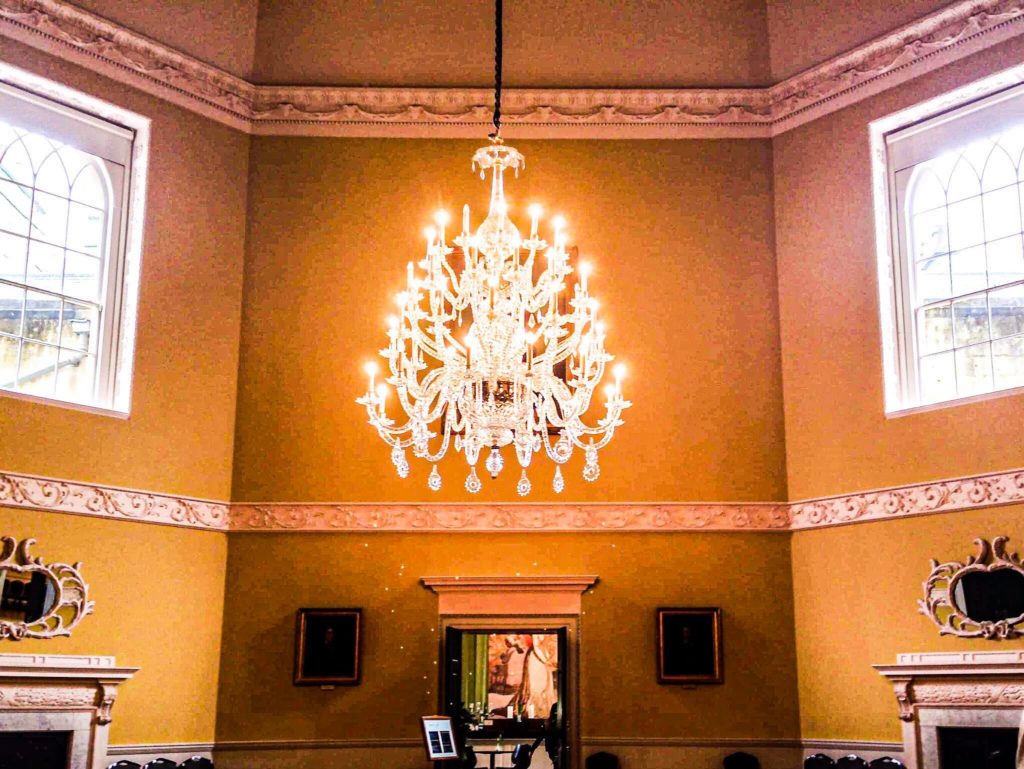
You can pretend to dance around the ballroom with Captain Tilney. Or even sit in the Octagon Room with Sir Walter Elliot from Persuasion, waiting for a concert to begin:
‘Sir Walter, his two daughters, and Mrs Clay, were the earliest of all their party at the rooms in the evening; and as Lady Dalrymple must be waited for, they took their station by one of the fires in the Octagon Room’
Northanger Abbey‘s Catherine was also delighted by the many balls and concerts in the Upper and Lower Rooms. In fact, it was the Master of Ceremonies, James King, who Jane Austen was acquainted with during her visit to Bath in 1797, that introduces Catherine to Henry Tilney.
3. The Royal Crescent & The Circus
Visiting the Pump Room and Assembly Rooms were not the only social activities young women could enjoy. The other thing they could do, other than shopping that is, was to take a stroll along the Royal Crescent and the Circus. The Royal Crescent is an incredible sight to visit, and it is a must-see for the diehard Austen fan!
The 30 terraced houses are laid out in a sweeping crescent shape, which is a magnificent architectural achievement. But most impressively, the stone facade has remained unchanged since it was built 230 years ago. This part of the city really feels like it’s frozen in time. Much of what we see here would still be recognisable even to Jane; So it is easy to imagine walking side-by-side with her, ridiculing the absurd customs and opinions of our society.
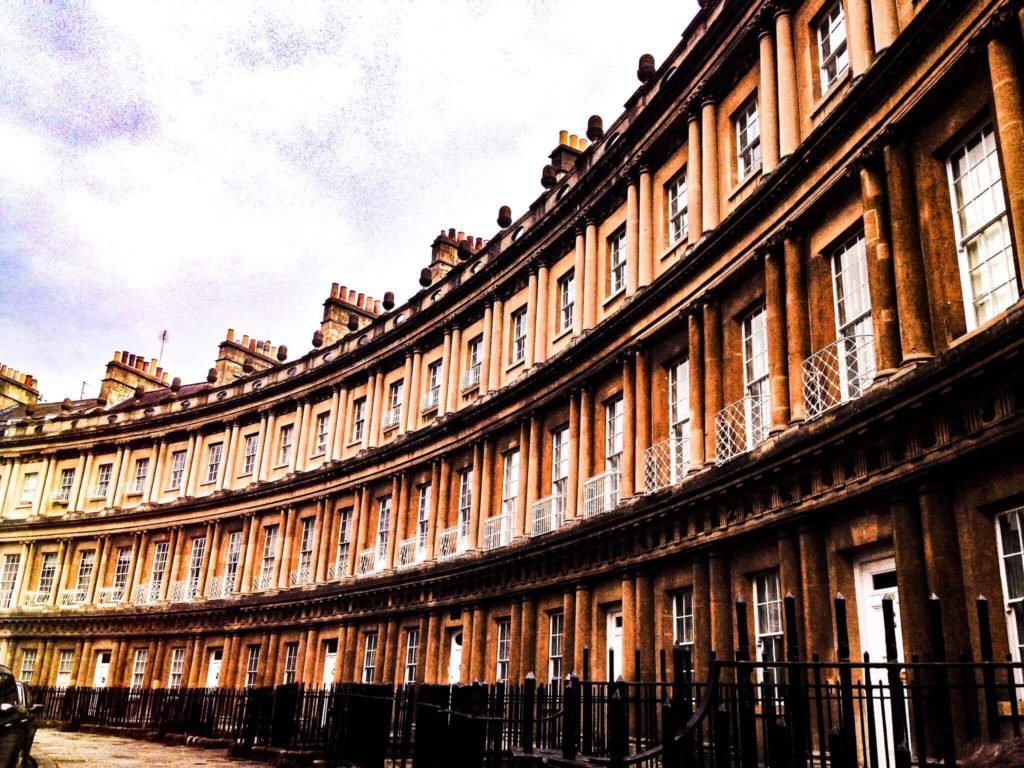
In the novel and BBC’s Persuasion, Anne Elliot is captured running breathlessly along the gravel walkway, trying to get to her beloved Captain Tilney. Not only can you recreate this pivotal meeting place, but you can also visit No1 Royal Crescent, which is now a museum. They have redecorated this house to resemble what a Georgian Town House would have looked like and to give a sense of how wealthy people might have lived. In my opinion, it is definitely worth a visit! It visually transports you back in time. For any history or Austen fan, it provides a rare chance to experience a time we’ve been thinking a lot about.
4. Jane Austen’s Trips To Milsom Street
Shopping was also a favourite pastime for the women of the upper echelons. This is not surprising, as it was well known that the shops in Bath were second only to those in London. The main shopping street was Milsom Street, and even today it is still one of Bath’s busiest roads.
Jane Austen wrote frequently to her sister Cassandra about the latest fashions in Bath. If you look up to the tops of the buildings, you’ll notice that many of the buildings are unchanged and many are as they were when Jane used to walk down this street herself.
Milsom Street in Austen’s novels
At the top of Milsom Street is where the Tilneys in Northanger Abbey is said to have lived in Edgar Buildings. It has also been referenced by Isabella Thorpe when she said:
‘I saw the prettiest hat in a shop window in Milsom Street’
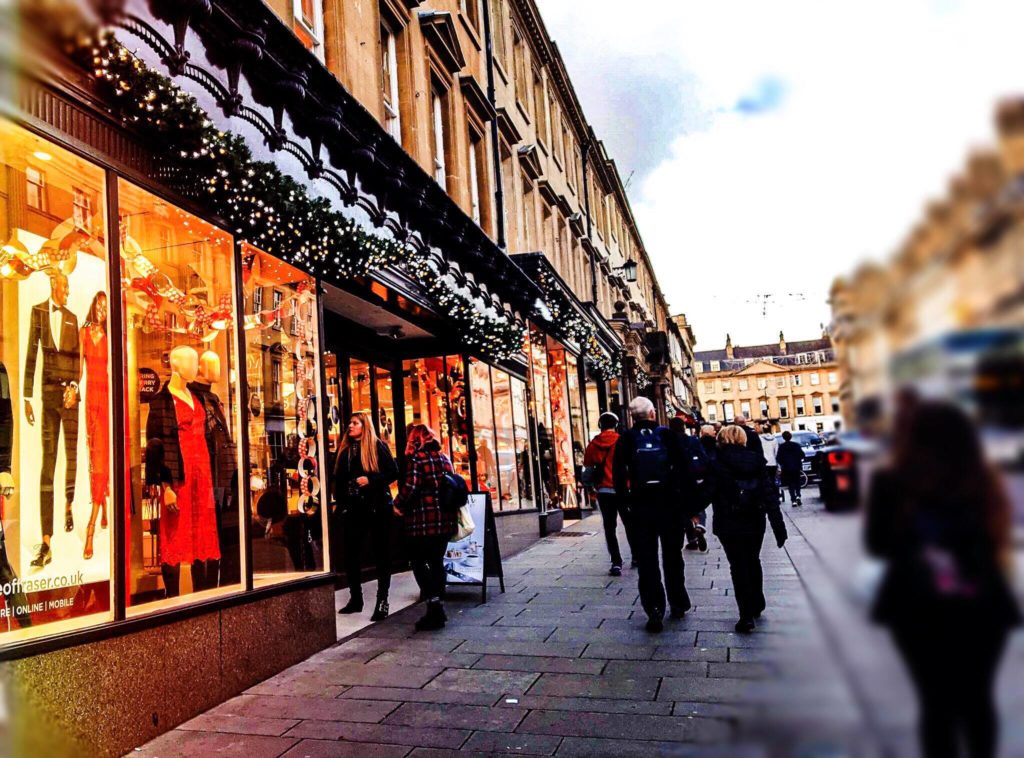
Even in Persuasion, Austen gives us a picture of Milsom Street that is very much like it is today. In this scene, we get an encounter between Anne and the Admiral:
‘… and in walking up Milsom Street she had the good fortune to meet with the Admiral. He was standing by himself at a printshop window, with his hands behind him, in earnest contemplation of some print’
This street is also the setting of a rather crude but expected scene in Persuasion:
‘He had frequently observed, as he walked, that one handsome face would be followed by thirty, or five a thirty frights; and once, as he had stood in a shop in Bond-street, he had counted eighty seven women go by, one after another, without there being a tolerable face among them.’
This is Sir Walter Elliot being referred to and Bond-street is the road that Milsom curves into. With a pinch of imagination, you can just about see the sour-faced Sir Elliot grumbling as the unsightly crowds of women walk by.
Even if you’re not that interested in recapturing Jane’s experience shopping, I would recommend taking some time to breathe in Milsom Street. These shops are some of the finest independent shops in the United Kingdom with great products. Trust me, your purse strings will cry!
5. Jane Austen in Sydney Gardens
Take a stroll in the pleasure gardens of Jane Austen’s Bath, which are now called the Sydney Gardens and can be accessed via the Holburne Museum. Whilst none of Austen’s novels feature this specific garden, the walking scenes and some daily activities in these novels were inspired by Jane’s time here.
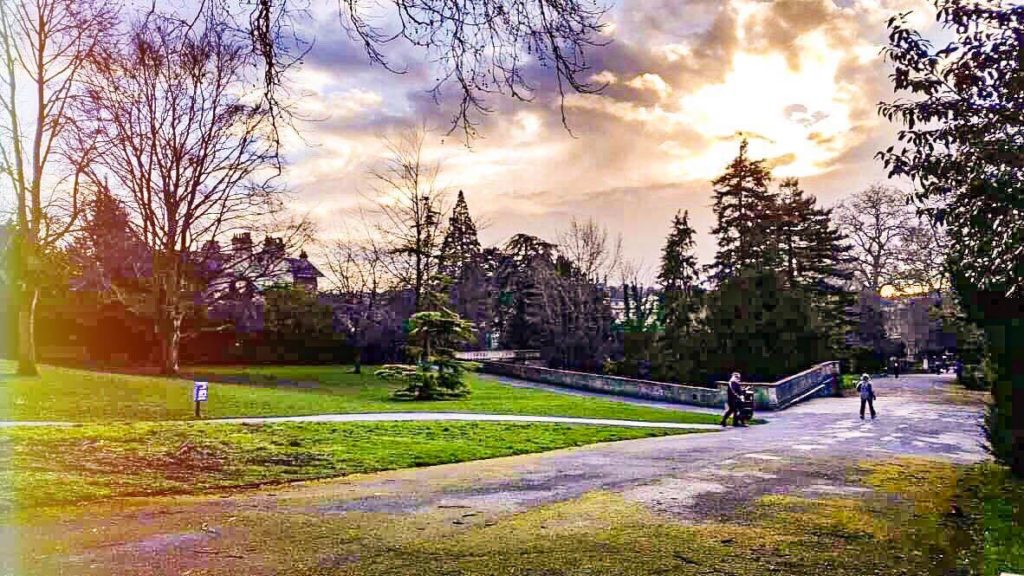
Sydney Gardens is the oldest park in the city of Bath. It was planned and laid out by the architect Harcourt Masters in 1795. It became so popular that crowds of fashionable people flocked there every day. The building was originally called the Sydney Hotel, although it was not a hotel in the traditional sense of the word. Instead, it was a place of entertainment, where public breakfasts, orchestras and fireworks were a daily occurrence.
Austen took residence in 4 Sydney Place in 1801, which is directly opposite the gardens. In describing the location to her sister, Jane wrote:
‘There is a public breakfast in Sydney Gardens every morning, so we shall not be wholly starved’
And later on, once the family had moved after her father’s death, Jane reflected that:
‘It would be very pleasant to be near Sydney Gardens – we might go into the Labyrinth every day’
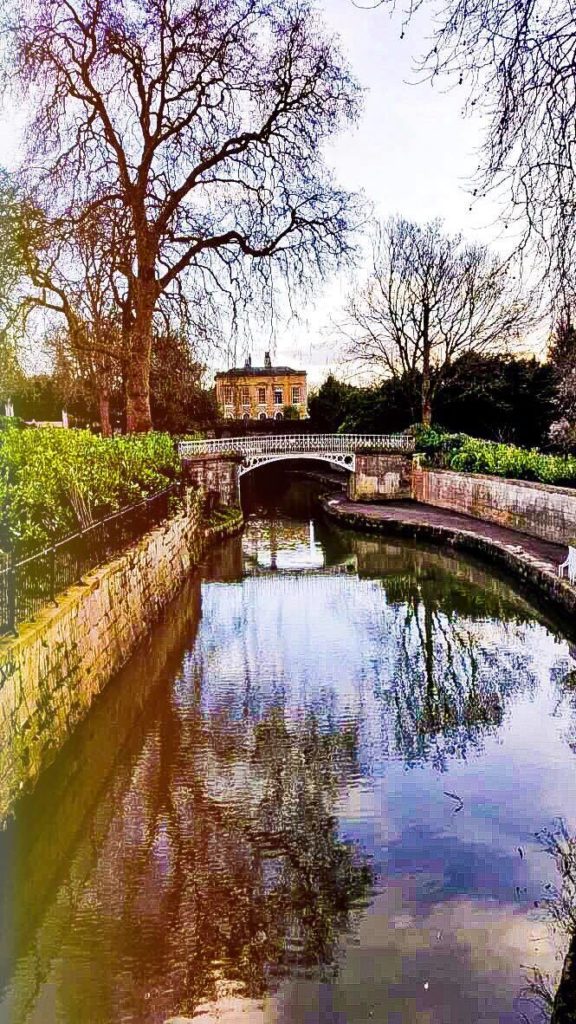
A Few other suggestions for Jane Austen fans
There are other locations that a Jane Austen fan should visit that don’t appear or have not influenced her literary imagination. A Janeite should visit Jane Austen’s home, 4 Sydney Place, that is opposite the Holburne Museum. The house today is commemorated by a plaque with Jane’s name on it, placed next to the front door. It is now luxury apartments. They are decked out in contemporary furniture. There is a bookshelf with Austen’s literature in the hallway and ‘Jane Austen tea’ is stocked in the kitchens.
The Jane Austen Centre is another excellent museum. It provides an insightful glimpse into her early life, literary influences and later life. It is located on Gay Street, where Jane once lived and is in a building similar to one Austen lived in herself.
Tracing Austen’s novel puts an enchanting spin on your visit and time spent in Bath. A spin that is dynamic and captivating. Put yourself in Jane’s place and use your imagination to see the world of her novels come alive. You’ll discover the life and work of one of England’s, and the world’s, greatest authors. You’ll see Bath with a totally new perspective.

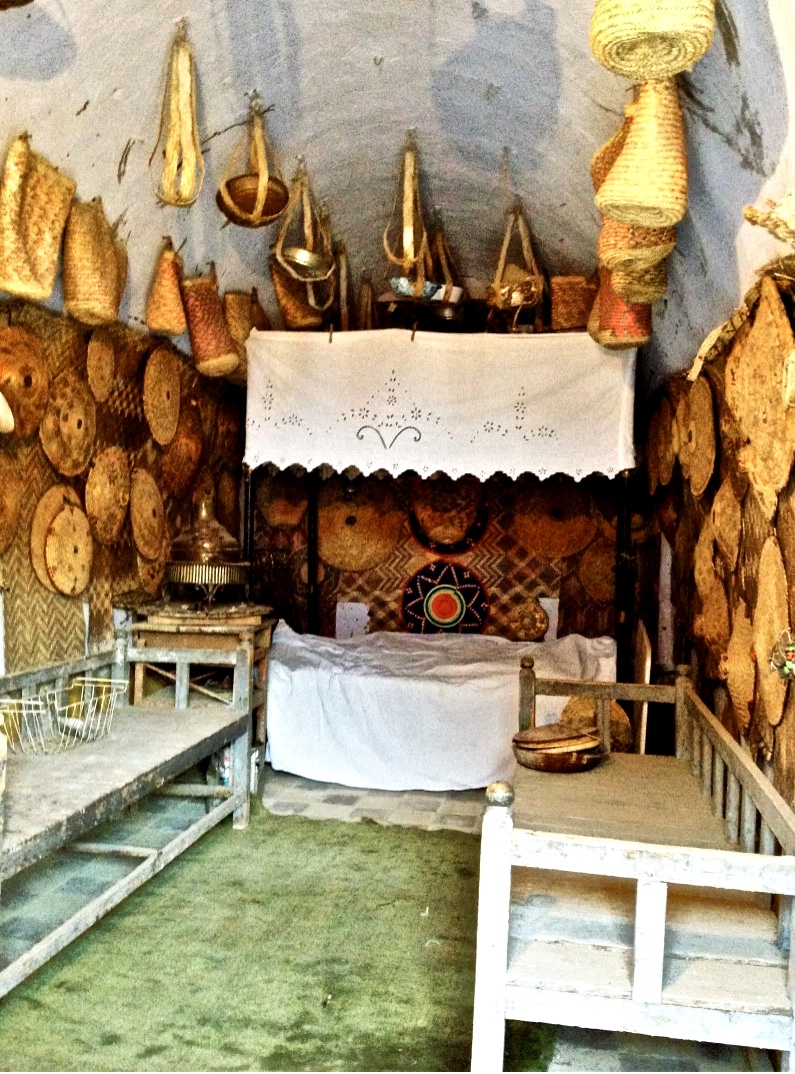

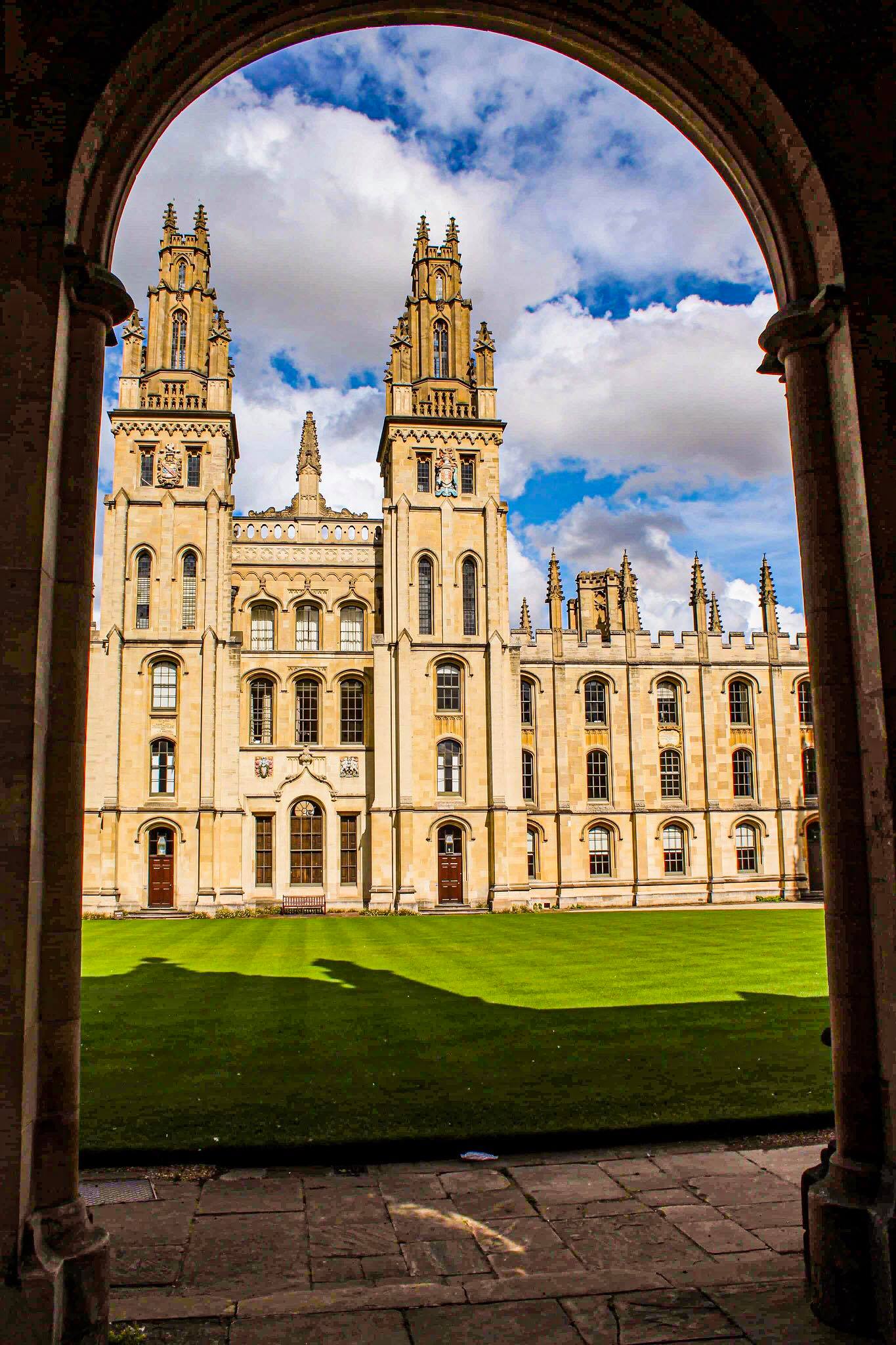
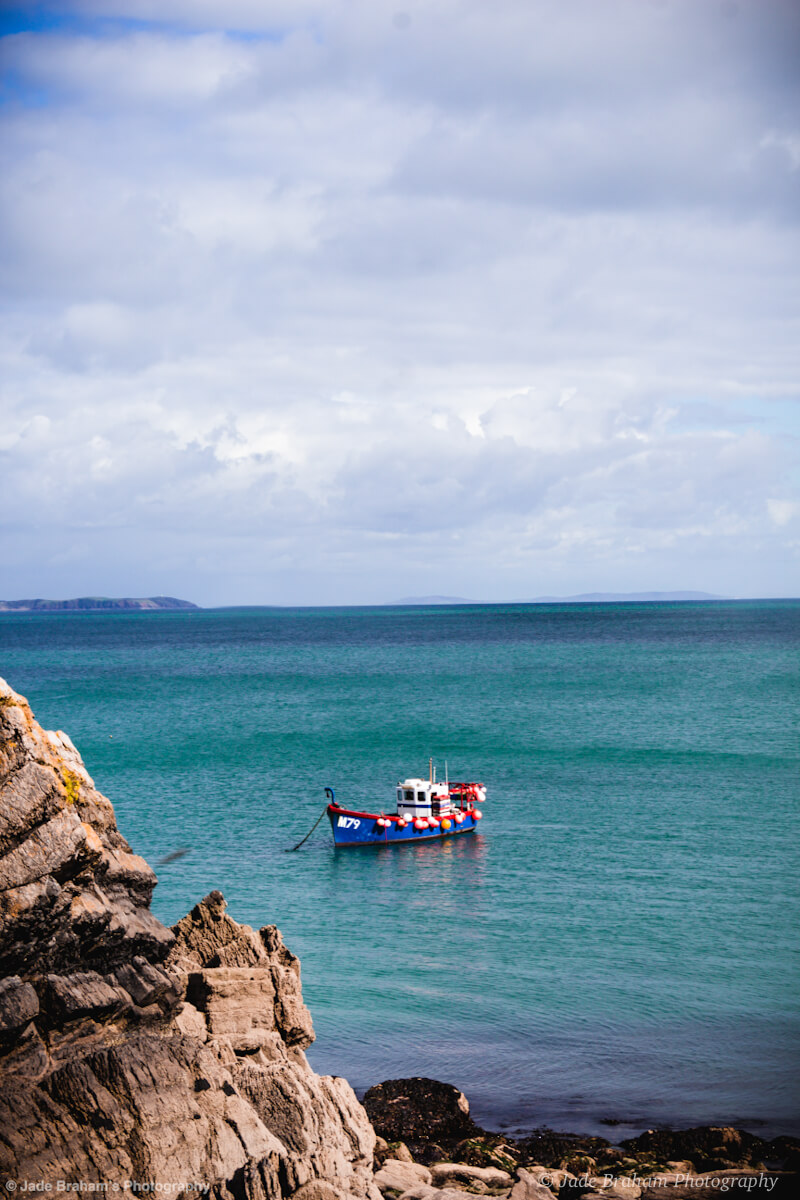

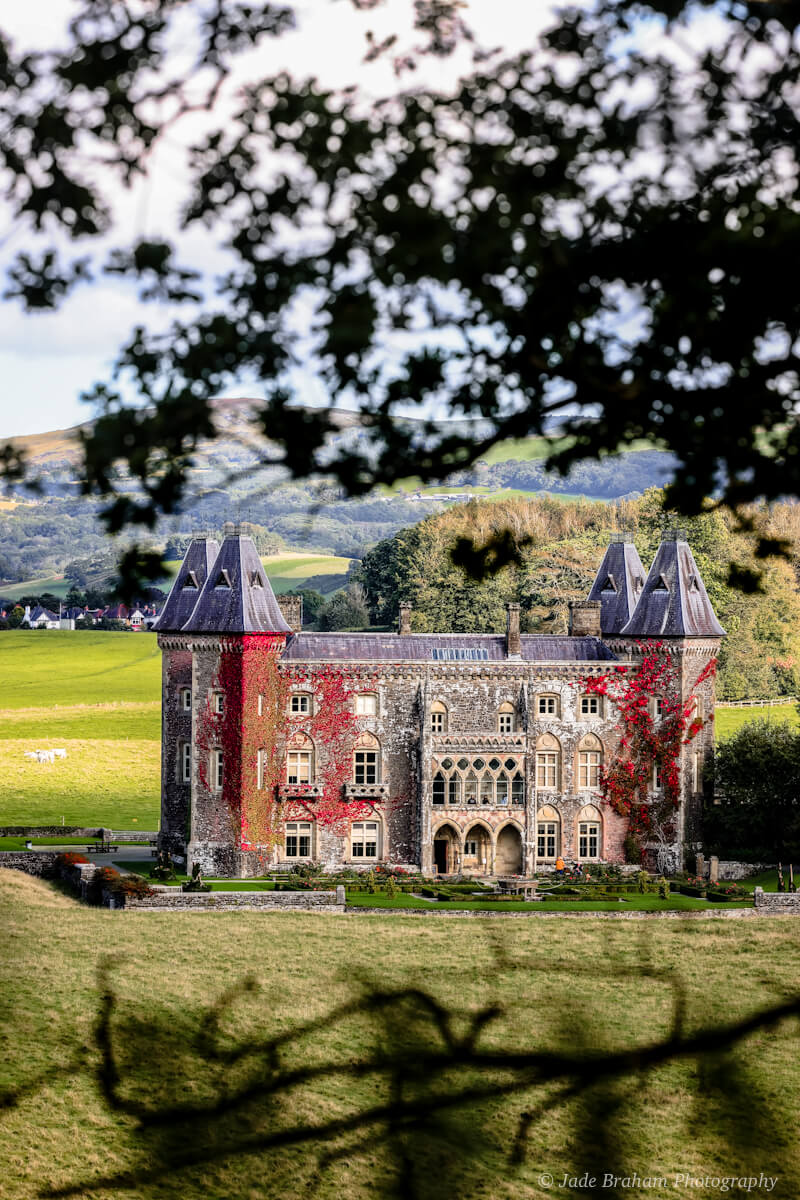
Such beautiful architecture, thank you for introducing this place with connection to Jane Austen, one of the greatest & my favorite novelist.
Bath is one of my fave places in the UK and I love love love Jane Austen. Your pics are great!
Exactly the same for me. Those are the reasons I’m moving to Bath!
That would fantastic if I could be there and see these places person. I would also like to visit Jane Austen’s home. It would be an experience I would treasure forever!
Jane Austen’s home in Bath is now an apartment that you can stay in, which is amazing, so maybe your dream to visit her home can come true.
So not my thing especially its about history but I really do appreciate you sharing this. I love knowing how things work those times.
Wow the view looks so Amazing!! I would love to check Jane Austen novel book I will put this on my list!
I love Jane Austen, you probably can tell, but her best novel is Pride and Prejudice. It doesn’t have any connections to Bath but it really showcases Austen’s talents.
Love this article. Looks like Bath is a beautiful place to visit and it is interesting to hear about the Jane Austen connection x
I wonder if there any tour companies in Bath that offer an organized guided tour of these places that have been preserved and are still standing.
Yes there are Jane Austen walking tours and a Jane Austen festival every September that will guide you around the city as well.
This is such a fascinating post! I don’t live too far from Bath (im in Bristol) and has no idea there were so many connections! Thanks for sharing! x
Thank you! Yeah, it’s really easy to do a day trip from Bristol! The city is layered with history it’s really lovely! x
Really enjoyed this!!!
Love this era of time and Austen.
It’s so interesting to read about how she really disliked the culture, but also wrote so well about it!
Yeah, it is! I think one of the reasons her novels about Bath are so fantastic is because she really had strong feelings against the city! Her wit and sarcasm are so much stronger because of it! If you like the era of Jane Austen, check out my post about Georgian Bath in a couple of weeks!
I’ve visited a number of the places you mention in Bath and had tea at the Pump Room. You do feel like you’ve immersed yourself in a Jane Austen novel when you’re there! Charlie x
That’s one of the reasons I love the city so much! Thank you for your kind words.
This is such a beautiful post. I love everything about art, culture. Thanks for sharing.
Good blog post. I absolutely appreciate this site. Continue the good work!
I’m really loving the theme/design of your web site. Do you ever run into any web browser compatibility problems?
A couple of my blog readers have complained about my blog not working
correctly in Explorer but looks great in Firefox.
Do you have any solutions to help fix this issue?
I’m sorry, I have yet to run into any problems. But if I do and find some good solutions, I’ll be sure to send these tips to you!
Keep this going please, great job!
Thank you so much!